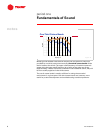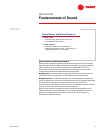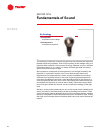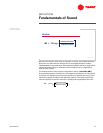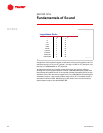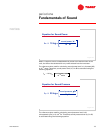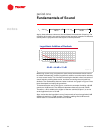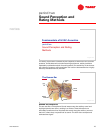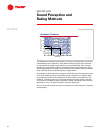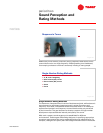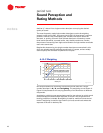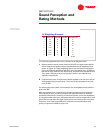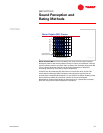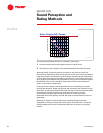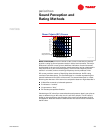
16 TRG-TRC007-EN
notes
period two
Sound Perception and
Rating Methods
The sensation of loudness is principally a function of sound pressure, however,
it also depends upon frequency. As a selective sensory organ, the human ear
is more sensitive to high frequencies than to low frequencies. Also, the ear’s
sensitivity at a particular frequency changes with sound-pressure level. Figure
20 illustrates these traits using a set of contours. Each contour approximates an
equal loudness level across the frequency range shown.
For example, a 60 dB sound at a frequency of 100 Hz is perceived by the human
ear to have loudness equal to a 50 dB sound at a frequency of 1,000 Hz. Also,
notice that the contours slant downward as the frequency increases from 20
to 200 Hz, indicating that our ears are less sensitive to low-frequency sounds.
The contours are flatter at higher decibels (> 90 dB), indicating a more uniform
response to “loud” sounds across this range of frequencies.
As you can see, the human ear does not respond in a linear manner to pressure
and frequency.
frequency, Hz
frequency, Hz
50
50
100
100
200
200
500
500
1,000
1,000
2,000
2,000
5,000
5,000
20
20
10,000
10,000
120
120
100
100
80
80
60
60
40
40
20
20
0
0
sound pressure, dB ref 20
sound pressure, dB ref 20
m
m
Pa
Pa
Loudness Contours
Figure 20



